Croozer Cargo 2014-2017 Le manuel du propriétaire
- Catégorie
- Vélos
- Taper
- Le manuel du propriétaire

2 en 1
Remorque bagagère pour vélo
Poussette à bagages
www.croozerdesigns.com
CroozerCargo14-ENG-F-USACAN-2-14
124 010 414
OWNER’S MANUAL
ENGLISH
ENG
Croozer Cargo
F
MODE D’EMPLOI
FRANÇAIS
2-in-1
Bicycle Cargo Trailer
Handcart
Read this manual before using this product. Failure to follow the instructions and safety precautions in this manual can
result in serious injury or death. Keep this manual in a safe location for future reference.
Avant utilisation, lisez ce mode d’emploi et conformez-vous aux consignes de sécurité et prescriptions qu’il contient. Le
non-respect de ces consignes et prescriptions peut être à l’origine d’accidents aux conséquences potentiellement mor-
telles. Conservez ce mode d’emploi en lieu sûr pour le cas où vous en auriez besoin ultérieurement.


I
CroozerCargo14-ENG-USACAN-2-14
Safety Guidelines
ENG
Safety Guidelines
Symbols and warnings
DANGER indicates a hazardous situation which, if not
avoided, will result in death or serious injury.
WARNING indicates a hazardous situation which, if not
avoided, could result in death or serious injury.
CAUTION indicates a hazardous situation which, if not
avoided, could result in minor or moderate injury.
NOTICE indicates a situation which, if not avoided, could
result in damage to the Croozer Cargo or the environ-
ment.
Tip: In this manual, “Tip” indicates helpful advice about
the use or maintenance of the Croozer Cargo.
Read and observe this manual!
This manual contains information that is extremely im-
portant for your safety and the safety of other road users.
Therefore, it is essential that you read the entire manual
carefully and follow the instructions closely. If you should
experience dif culties understanding any of the informa-
tion or instructions, please contact your Croozer dealer.
Keep this manual handy at all times for future reference. If
you loan or sell your Croozer Cargo, pass on this manual
to the new user. It is also vitally important that you read
and observe the instructions provided in the manual of the
towing bicycle.
Who can ride the towing bicycle?
Be sure to acquaint yourself with the applicable laws in the
state or country where you plan to use the Croozer Cargo.
Requirements for the towing bicycle
The towing bicycle must be approved by its manufacturer
for pulling a trailer. This information can be found in the
owner’s manual of the bicycle. Furthermore, the towing
bicycle must be in perfect working order and have strong,
properly functioning brakes. Motorized vehicles may not
be used for pulling bicycle trailers. The only exception
to this rule is a pedelec. This special type of e-bicycle
has an electric motor that delivers assist only when the
rider pedals. In many countries, pedelecs legally qualify
as bicycles. However, e-bikes with a maximum speed of
more than 12 mph (20 km/h) may not be used for pulling
the Trailer. The towing bicycle should be equipped with a
sturdy rear-mount kickstand to ensure safety when loading
and unloading the Trailer.
Be sure to familiarize yourself with the legal requirements
that apply to towing bicycles in the country or state where
you will be using the Croozer Cargo.
The towing bicycle must have a 26” or 28” (559 or 622mm)
rear wheel. This information can be found on the tire side-
walls. The numbers 42-622, for example, indicate that the
tire has a width of 42 mm and a bead-seat diameter of 622
mm (28 inches).
Legal requirements for using a bicycle trailer
Be sure to familiarize yourself with the legal requirements
that apply to pulling a bicycle trailer in the country or state
where you will be using the Croozer Cargo.
Before your rst ride ...
It is vitally important that you familiarize yourself with the
Croozer Cargo before you use it for transporting cargo.
Prior to your rst ride with the Trailer on public roads, Zwei
plus zwei GmbH recommends taking a practice ride in a
calm, traf c-free area. This is a great way to acquaint your-
self with the handling of the bicycle and the dimensions of
the Trailer.
Pulling the Croozer Cargo as a Bicycle
Trailer
Before each ride, check the following:
• Are the wheels securely attached?
• Are both vertical frame tubes snapped securely into the
clips?
• Are all security pins correctly inserted and locked?
Check that none of the security pins are hanging freely
from their straps.
• Check tire pressure prior to each ride. The actual tire
pressure should never be higher or lower than the
maximum and minimum in ation pressures marked
on the tire sidewall. (See also page 22). Never use
compressed air, e.g. from a gas station, to ll your tires.
The rapid air ow and high pressure can overin ate the
tires, causing the tube and/or tire to burst.
Turning
Always reduce your speed to a walking pace when mak-
ing turns with the Bicycle Trailer. Keep in mind that riding
speed is often underestimated, especially on bikes with
electric assist. When turning at high speeds, the increased
centrifugal force can cause the Trailer to skid or tip over
and result in accidents with serious injury or death.
Riding downhill
Always reduce your speed when riding downhill. Riding at
excessive speeds can cause the Trailer to skid, potentially
resulting in accidents with serious injury or death.
Riding over curbs or uneven surfaces
Riding over a curb or other obstacle with only one wheel
of the Bicycle Trailer could cause the Trailer to tip over,
resulting in accidents with serious injury or death. Empty
trailers are especially susceptible to tipping. Therefore, if
you have to ride over a curb or similar obstruction, always
use extreme caution and ride at very low speeds. Never
use the Croozer Cargo on stairs or escalators.
Being visible to others
Never use your Croozer Cargo as a Bicycle Trailer in road
traf c without the safety ag mounted. The safety ag
makes it easier for other road users to see you.
Carrying cargo
Secure all cargo inside the Trailer. In order to avoid safety
risks, never transport unsecured or improperly secured
cargo. Never attach cargo, such as bags or panniers, to

II
CroozerCargo14-ENG-USACAN-2-14
Safety Guidelines
the outside of the Trailer. Cargo attached outside of the
Trailer can drastically affect the handling and stability of
the Croozer Cargo, resulting in accidents with serious
injury or death.
Using the Croozer Cargo as a Handcart
The Croozer Cargo with Handcart Kit is not approved for
jogging or skating. Pushing the Handcart faster than a
walking pace is not permitted.
Use, storage, and transport
Never transport the Croozer Cargo – even when folded –
on the roof of a motor vehicle.
Never use or store the Croozer Cargo at temperatures
below - 4°F (-20°C).
Assembly, maintenance, and repair
Technical condition
Never use the Croozer Cargo if it is not in perfect working
order. The Croozer Cargo must be periodically inspected
for damage and/or wear to the wheels, hitch arm, frame,
fabric body, security pins, and axle hitch. If any of these
parts are found to be damaged, the Croozer Cargo may
not be used until the damage has been properly repaired,
ideally by a professional bicycle mechanic.
It is critical that all maintenance work specied in the sec-
tion “Croozer Cargo Inspections and Maintenance” (page
21) be performed in the specied intervals.
Using the Croozer Cargo when it is not in perfect working
order can result in accidents with serious injury or death.
Proper assembly and repair
The Croozer Cargo must be properly assembled to pro-
fessional standards. Follow the instructions for the correct
installation of the axle hitch, hitch arm, and Handcart Kit
components. When in doubt, contact your Croozer dealer.
All repairs must be carried out to professional standards
using only original Croozer parts, ideally by a professional
bicycle mechanic. Incorrect installation or repair work could
result in accidents with serious injury or death.
Suitable accessories and original spare parts
Only use accessories and original spare parts that have
been recommended and approved by Zwei plus zwei
GmbH. These are the only components that can be used
safely with the Croozer Cargo. When in doubt, consult a
Croozer dealer. The use of non-approved accessories or
incompatible spare parts could result in accidents with
serious injury or death. Zwei plus zwei GmbH cannot be
held responsible for any damage resulting from the use of
non-approved accessories or incompatible spare parts.
Changes and modications
For safety reasons, no modications or changes can be
made to the Croozer Cargo.
Do not install attachment parts, such as luggage racks
etc. Making modications or changes to your Croozer
Cargo can result in accidents with serious injury or death.
Furthermore, changes or modications the vehicle will
void any warranty claims. Zwei plus zwei GmbH will not be
liable for damages of any kind resulting from changes or
modications that have been made to the Croozer Cargo.
WARNINGS
Never transport children in the Croozer Cargo.
Do not use plastic bags or packaging in cribs, beds,
carriages, or playpens. Plastic bags and packaging materi-
als can be dangerous. To avoid danger of suffocation,
keep plastic bags and packaging away from babies and
children. Babies and children could pull plastic bags or
packaging over their heads and suffocate.
Choking hazard! The shipping box contains small parts
that could present a choking hazard to young children. To
avoid serious injuries or death, keep small parts away from
young children.
Wheels that have not been securely attached can fall
off when riding, resulting in accidents with serious injury
or death. After you have attached the wheels, it is vitally
important that you check whether the axles are securely
locked into the axle receivers by firmly pulling on the
wheels. It should not be possible to remove the wheels
without pressing on the dust cap.
It is very important that you do not confuse the hitch arm
attachment bracket with the handlebar attachment bracket
(marked with a warning label). The handlebar attachment
bracket is not intended for use with the hitch arm. The
use of the Trailer with the hitch arm attached to the wrong
bracket could cause accidents with serious injury or death.
The improper use of the brackets could also damage the
Trailer.
It is vitally important to confirm that the towing bicycle is
suitable for pulling trailers. Pulling a trailer with a bicycle
that has not been approved by its manufacturer for use
as a towing bicycle can result in frame breakage or other
material damage. This could cause accidents with serious
injury or death.
It is vitally important that the hitch be properly installed. An
improperly installed hitch could come loose while riding
and cause accidents with serious injury or death.
The tension-adjusting nut of the towing bicycle must
engage the threads for at least five full turns in order
to ensure adequate clamping force for holding the rear
wheel securely. Failure to tighten the tension-adjusting nut
adequately may result in accidents with serious injury or
death. If the quick-release skewer is too short, it must be
replaced. Consult a professional bicycle mechanic for the
appropriate parts and assistance.
It is vitally important that the rear wheel of the towing bi-
cycle with the hitch be installed correctly. Riding with an in-
correctly installed rear wheel could result in accidents with
serious injury or death. Follow the instructions and warn-
ings given in the owner’s manual of the towing bicycle.
When in doubt, consult a professional bicycle mechanic.
When pulling the Croozer Cargo as a Bicycle Trailer, the
safety flag must be properly mounted at all times. If the
safety flag is not properly mounted, other road users may
fail to see the Croozer Cargo, which could result in ac-
cidents with serious injury or death.

III
CroozerCargo14-ENG-USACAN-2-14
Safety Guidelines
ENG
Never transport unsecured or improperly secured cargo
items in the Croozer Cargo! The cargo items can shift
during transport, resulting in a sudden change in weight
distribution. Shifting weight can cause erratic handling,
which can lead to accidents with serious injury or death.
NEVER OVERLOAD THE Croozer Cargo. Doing so can
severely affect the Croozer Cargo’s handling and cause
accidents with serious injury or death.
Never overload the trailer and never ride with a hitch-arm
load that is outside the specified range of 6.6 to 16.6 lbs
(3 - 7.5 kg). Always distribute the load evenly. Failure to do
so could compromise the handling properties and cause
accidents with serious injury or death.
Always check that the wire loop of the security pin is
snapped securely onto the pin end. If the security pin is
not securely locked, the hitch arm could fall off the towing
bicycle while riding, resulting in accidents with serious
injury or death.
Never pull the Croozer Cargo as a Trailer without the hitch-
arm safety strap securely fastened to the towing bicycle.
The safety strap ensures that the Trailer would remain
connected to the towing bicycle if the hitch connector were
to fall off the axle hitch. Failure to use the safety strap as
specified above could cause accidents with serious injury
or death.
Never leave the Handcart wheel attached when using the
Croozer Cargo as a Trailer. The Handcart wheel could get
caught on obstacles as you pass, resulting in accidents
with serious injury or death.
The rider must wear a CPSC-approved bicycle helmet at
all times. In the case of an accident, a helmet will prevent
or reduce head injuries. In some countries, the use of
helmets is required by law. Riding without a helmet could
result in serious injury or death in the case of an accident.
The towing bicycle must be equipped with strong, properly
functioning brakes. Riding with inadequate or improperly
functioning brakes could result in accidents with serious
injury or death.
Riding too fast could cause the trailer to skid or even tip
over, resulting in accidents with serious injury or death.
Never use a trailer without lighting at night, dusk, or dawn
– or whenever visibility is in any way reduced. Other road-
users may not be able to see you, which could result in
accidents with serious injury or death.
Never use the Croozer Cargo if it is not in perfect working
order. Damaged parts could cause accidents with serious
injury or death. Therefore, it is vitally important that you
have your Croozer Cargo serviced regularly – at least once
a year – by a professional bicycle mechanic.
It is vitally important that the maintenance work described
in this section be performed to professional standards and
at the specified intervals.
Inspect the tires periodically for adequate tread depth and
any signs of damage or excessive wear. Worn-out or dam-
aged tires can affect the handling and even burst, which
could result in accidents with serious injury or death.
CAUTIONS
RISK OF PINCHING OR CRUSHING! There are pinch
points between the clips and frame tubes, that may cause
painful injuries. Use caution to avoid these points when
folding or unfolding the trailer.
If the frame tubes are not snapped securely into the clips,
the frame of the Croozer Cargo could collapse while riding.
NOTICES
Always check that the wire loop of the Handcart wheel
security pin is snapped securely onto the pin end. If the se-
curity pin is not securely locked, the Handcart wheel could
fall off while in use, potentially damaging the hitch arm.
After removing the Handcart wheel, be sure to lock the se-
curity pin back into the hole in the Handcart wheel socket
(3) or in the hitch connector (5). Never leave the security
pin hanging freely from its strap! It could get caught on
passing objects and be pulled off, damaging the vehicle.
Check that no sharp objects are positioned in such a way
that they could damage the fabric body during transport.
Use packaging material if necessary.
Never transport the Croozer Cargo – even when folded –
on the roof of a motor vehicle, as this could damage the
body.
Check the tire pressure before each use. The actual tire
pressure should never be higher or lower than the maxi-
mum and minimum inflation pressures marked on the tire
sidewall. Riding with under-inflated tires can damage the
tires and rims. Over-inflation can cause the inner tube or
tire to explode. The inner tubes have Schrader valves,
also known as car valves. You will need a pump with the
appropriate nozzle. Never use compressed air, e.g. from a
gas station, to fill your tires. The quick flow and high pres-
sure can overinflate the tires, causing the tube and/or Tire
to burst.
To prevent mildew and mold growth, the Croozer Cargo
must be completely dry and clean before being put into
storage.

IV
CroozerCargo14-ENG-USACAN-2-14
Safety Guidelines

1
CroozerCargo14-ENG-USACAN-2-14
Safety Guidelines
ENG
Description . . . . . . . . . . . . . . . . .2
What’s what?. . . . . . . . . . . . . . . . . . . . . . 2
2-in-1 System . . . . . . . . . . . . . . . . . . . . . 3
What is the Croozer Cargo? . . . . . . . . . . . . . . 4
How should the Croozer Cargo be used? . . . . . . . 4
How shouldn’t the Croozer Cargo be used? . . . . . . 4
Orientation and wording . . . . . . . . . . . . . . . . 4
Applicable standards . . . . . . . . . . . . . . . . . . 4
Initial Assembly and Unfolding
the Croozer Cargo . . . . . . . . . . . . .5
Checking package contents . . . . . . . . . . . . . . 5
Unfolding the Croozer Cargo . . . . . . . . . . . . . 6
Attaching and removing the wheels . . . . . . . . . . 7
Converting the Croozer Cargo to
a Bicycle Trailer . . . . . . . . . . . . . . .8
Installing and removing the hitch arm . . . . . . . . . 8
Installing the axle hitch to the towing bicycle. . . . . . 8
Installing the safety ag . . . . . . . . . . . . . . . 11
Converting the Croozer Cargo to
a Handcart . . . . . . . . . . . . . . . . 12
Installing and removing the Handcart wheel . . . . . 12
Attaching and removing the handlebar. . . . . . . . 13
Using your Croozer Cargo . . . . . . . . 14
Transporting cargo . . . . . . . . . . . . . . . . . . 14
Hitching the Croozer Cargo to the Towing Bicycle . . 16
Special considerations when riding with the
Bicycle Trailer . . . . . . . . . . . . . . . . . . . . 17
Special Considerations When Using the Handcart. . 19
Transporting your Croozer Cargo . . . . 20
Croozer Cargo Inspections and
Maintenance. . . . . . . . . . . . . . . . 21
Inspection intervals . . . . . . . . . . . . . . . . . 21
Service intervals . . . . . . . . . . . . . . . . . . . 21
Inspecting the hitch arm, hitch connector, and
Handcart Kit components . . . . . . . . . . . . . . 22
Inspect the fabric body and cover . . . . . . . . . . 22
Checking tire pressure and treads . . . . . . . . . . 22
Cleaning and lubricating the wheel axles . . . . . . 23
Servicing the Handcart wheel . . . . . . . . . . . . 23
Servicing the hitch-connector joint . . . . . . . . . . 23
Inspecting the Croozer Cargo after an accident . . . 23
Cleaning and Storing the Croozer
Cargo . . . . . . . . . . . . . . . . . . . 24
How do I clean and maintain my Croozer Cargo? . . 24
How do I store my Croozer Cargo? . . . . . . . . . 24
Preparing the Croozer Cargo for disposal . . . . . . 25
Technical Data . . . . . . . . . . . . . . 26
Accessories . . . . . . . . . . . . . . . . 26
Limited Manufacturer Warranty . . . . . 27
Servicing, and warranty claims . . . . . 27
Table of Contents

2
CroozerCargo14-ENG-USACAN-2-14
Description
Hitch arm
attachment bracket
Handcart
wheel socket
Front re ectors
Handcart wheel
Description
What’s what?
Handlebar
Quick-release wheels
Hitch arm
Spoke re ectors
Safety ag
Push button for
quick-release wheels
Rear re ectors
Cargo area
Buckles for cover
Handlebar attachment socket
Hitch connector
Cover

3
CroozerCargo14-ENG-USACAN-2-14
Description
ENG
Handcart wheel
=
2-in-1 System
Croozer Cargo Chassis
with hitch arm
+
Croozer Cargo
Bicycle Trailer
ClosedOpen
Croozer Cargo
Handcart
Bicycle Kit
Safety ag,
Axle hitch
Handcart Kit
Handlebar,
Handcart wheel
+ =
Security pins for:
Hitch connector
and
Handcart wheel

4
CroozerCargo14-ENG-USACAN-2-14
Description
What is the Croozer Cargo?
The Croozer Cargo is a bicycle trailer for transporting
cargo. It can also be quickly and easily converted to a
Handcart using a Handcart wheel and handlebar.
How should the Croozer Cargo be used?
The Croozer Cargo is intended for private use for trans-
porting cargo in daylight hours on roads and other smooth,
well-surfaced paths as a bicycle trailer or handcart. The
instructions and safety guidelines provided in this manual
must be followed at all times.
Maximum Weight of Loaded
Trailer
(Trailer + Cargo)
121 lbs (55 kg)
Maximum Load*
(Cargo)
88 lbs (40 kg)
Hitch-arm Load (Nose Weight) 6.6 - 16.6 lbs (3 - 7.5 kg)
* Weight limits only apply if the hitch-arm load is within the speci-
ed range of 6.6 to 16.6 lbs (3-7.5 kg). See page 14.
When in use as a Bicycle Trailer in poor visibility condi-
tions or at night, dusk, or dawn, the Croozer Cargo must
be equipped with a lighting system that complies with the
applicable laws and regulations in the country of use. Any
spare parts used for the Croozer Cargo must be approved
by Zwei plus zwei GmbH and properly installed, ideally
by a professional bicycle mechanic. Use only accessories
that are suited for the Croozer Cargo and/or have been
approved by Zwei plus zwei GmbH.
How shouldn’t the Croozer Cargo be used?
The Croozer Cargo may not be used in any manner other
than as specied above. Never transport children or ani-
mals in the Croozer Cargo. Commercial use, overloading,
excessive speeds (of more than 12 mph, or 20 km/h, when
in use as Cargo Trailer or more than walking speed when
used as Handcart), improper repairs, and use on unsur-
faced roads or paths are not permitted.
Never pull the Croozer Cargo with a motorized vehicle,
such as a moped or scooter. This also applies to motor-
ized bicycles with a maximum speed of more than 12 mph
(20 km/h). Do not mount the hitch to a bicycle with a
rear-wheel hub motor, unless this modication is approved
by the manufacturer of the bicycle and/or motor. Zwei plus
zwei GmbH will not be liable for any damages resulting
from non-compliance with these requirements.
Orientation and wording
Unless otherwise indicated, the terms right and left in this
manual refer to the rider’s right or left when seated on the
towing bicycle, facing forward (i.e. relative to the direction
of travel).
Applicable standards
The following standards were taken into consideration:
EN 15918:2011

5
CroozerCargo14-ENG-USACAN-2-14
Initial Assembly and Unfolding the Croozer Cargo
ENG
Initial Assembly and Unfolding the
Croozer Cargo
If you have purchased the Croozer Cargo from a shop,
the dealer should have installed the axle hitch to the
towing bicycle and sold the vehicle “ready to use”. If you
ordered your Croozer Cargo from an online or mail-order
catalogue, we recommend having the initial assembly
performed by a professional bicycle mechanic. Further-
more, dealers are required to provide the customer with all
important information on the use of the Croozer Cargo. If
the initial assembly has been performed, you can skip the
rst few steps of this section.
If your Croozer Cargo was not assembled prior to sale,
then have the initial assembly performed by a professional
bicycle mechanic or follow the assembly instructions be-
low. No tools are required for the assembly.
The Croozer Cargo must be properly assembled. Impro-
per assembly can result in accidents with serious injury
or death.
Checking package contents
The Croozer Cargo is packaged in a box for shipment.
In order to minimize package size, the Croozer Cargo is
shipped in its folded state (1). All of the removable parts
are packed inside the Trailer.
1. Take the folded Croozer Cargo out of the box and
remove all packaging materials.
2. Open the cabin and remove all individual parts from
inside the Trailer.
These parts include the wheels (2), hitch arm with axle hitch
(3), handlebar (consists of two parts) (4), Handcart wheel
(5), safety ag (6), cover (7), and this manual (8).
3. Remove all packaging material from the individual
parts and recycle if possible. It is advisable to keep the
box, e.g. for future storage or transport.
4. Remove all transport restraints on the frame of the
Croozer Cargo.
Unfold the Croozer Cargo completely before installing the
individual parts.
Do not use plastic bags or packaging in cribs, beds,
carriages, or playpens. Plastic bags and packaging ma-
terials can be dangerous. To avoid danger of suffocation,
keep plastic bags and packaging away from babies and
children. Babies and children could pull plastic bags or
packaging over their heads and suffocate.
Choking hazard! The shipping box contains small parts
that could present a choking hazard to young children.
To avoid serious injuries or death, keep small parts away
from young children.
1
1
2
3
4
5
7
8
6

6
CroozerCargo14-ENG-USACAN-2-14
Initial Assembly and Unfolding the Croozer Cargo
Unfolding the Croozer Cargo
1. Place the folded Trailer on a clean and stable surface.
2. Pull up the two side panels (1).
3. Pull the rear frame tube (2) towards the back and
press it into the clips (3) on both sides until you hear
and feel it snap into place.
4. Pull the front frame tube (4) forwards and press it into
the clips (5) until you hear and feel it snap into place.
RISK OF PINCHING OR CRUSHING! There are pinch
points between the clips and frame tubes, that may cause
painful injuries. Use caution to avoid these points when
folding or unfolding the trailer.
Tip: A new Croozer Cargo will be slightly more difficult to
unfold because the canvas is still stiff.
5. Check that the front and rear frame tubes (2 and 4)
are snapped fully into the clips on both sides (3 and
5) by pulling the two frame tubes inwards with gentle
pressure. There should be no movement in the frame
tubes when you press against them.
If the frame tubes are not snapped securely into the clips,
the frame of the Croozer Cargo could collapse while rid-
ing.
6. To fold the Trailer, follow these instructions in the
reverse order. Remove the cover and pull the frame
tubes out of the clips (3 and 5 on both sides).
1
1
2
3
5
4

7
CroozerCargo14-ENG-USACAN-2-14
Initial Assembly and Unfolding the Croozer Cargo
ENG
Attaching and removing the wheels
The wheels of the Croozer Cargo are equipped with push-
button axles. By pressing the dust cap (1) on the wheel
hub, the retaining balls (2) will retract within the axle to
permit the attachment or removal of the wheel. The wheels
cannot be attached or removed unless the dust cap is
pressed in.
1. Remove the protective caps (3) from the wheel axles.
It is advisable to keep the protective caps for future
use, e.g. when transporting the Croozer Cargo.
2. Use one hand to lift up the back of the Croozer Cargo.
3. Press the dust cap (1) of the wheel hub with the mark-
ing “PUSH”.
4. Insert the wheel axle (4) into the axle receiver (5) of
the Croozer Cargo as far as it will go and release the
dust cap.
5. Check whether the wheel is locked securely into the
axle receiver by pulling rmly on the wheel without
pressing the dust cap. It should not be possible to
remove the wheel unless the dust cap is pressed.
6. Repeat steps 2-5 to attach the second wheel.
Wheels that have not been securely attached can fall
off when riding, resulting in accidents with serious injury
or death. After you have attached the wheels, it is vitally
important that you check whether the axles are securely
locked into the axle receivers by firmly pulling on the
wheels. It should not be possible to remove the wheels
without pressing on the dust cap.
7. To remove the wheels, follow these instructions in the
reverse order. Press the dust caps (1) and pull the
wheel axles out of the receivers.
1
4
5
2
3
2

8
CroozerCargo14-ENG-USACAN-2-14
Converting the Croozer Cargo to a Bicycle Trailer
Converting the Croozer Cargo to a
Bicycle Trailer
Installing and removing the hitch arm
The hitch arm is installed on the front left side of the
Croozer Cargo (relative to the direction of travel). The front
of the Trailer has white re ectors.
1. Lift the front of the Croozer Cargo.
2. Hold the hitch arm with the curvature and the hole (1)
facing outwards, and slide the end into the hitch arm
attachment bracket (2) until you hear and feel it snap
into place.
It is very important that you do not confuse the hitch
arm attachment bracket with the handlebar attachment
bracket (marked with a warning label). The handlebar
attachment bracket is not intended for use with the hitch
arm. The use of the Trailer with the hitch arm attached
to the wrong bracket could cause accidents with serious
injury or death. The improper use of the brackets could
also damage the Trailer.
3. To remove the hitch arm, press the release mecha-
nism (3) and pull the hitch arm out of the bracket.
Installing the axle hitch to the towing bicycle
The hitch assembly is mounted to the left side of the bicy-
cle (relative to the direction of travel) and consists of two
parts: a hitch connector (1) on the hitch arm of the Croozer
Cargo and an axle hitch (2), which is mounted to the rear
axle of the towing bicycle.
However, before using a bicycle for pulling the Croozer
Cargo, you must rst check whether it is suitable for use
as a towing bicycle. This information can be obtained from
the bicycle manufacturer, a bicycle shop, or the owner’s
manual of the bicycle.
It is vitally important to confirm that the towing bicycle is
suitable for pulling trailers. Pulling a trailer with a bicycle
that has not been approved by its manufacturer for use
as a towing bicycle can result in frame breakage or other
material damage. This could cause accidents with seri-
ous injury or death.
If you are not completely con dent about your ability to
install the axle hitch correctly, please consult with, or
have the installation performed by, a professional bicycle
mechanic.
It is vitally important that the hitch be properly installed.
An improperly installed hitch could come loose while rid-
ing and cause accidents with serious injury or death.
1
2
Click!
3
2
1

9
CroozerCargo14-ENG-USACAN-2-14
Converting the Croozer Cargo to a Bicycle Trailer
ENG
Installing the axle hitch to a bicycle with a quick-
release axle
The quick-release lever (1) must be positioned on the right
side of the bicycle (relative to the direction of travel). If the
lever is on the left side, the quick-release assembly must
be removed and reinserted from the right side. Be sure to
follow the applicable instructions in the owner’s manual of
the bicycle and/or consult a professional bicycle mechanic.
1. Disengage the quick-release lever (1) on the rear
wheel of the towing bicycle or loosen the hex bolt
(5 mm), depending on the version. Often, the open
position is indicated on the lever by the word “OPEN”.
In this case, when the word “OPEN” can be seen, the
lever is in the open position.
2. Remove the tension-adjusting nut (2) of the quick-
release assembly by turning the nut counterclockwise.
Use caution: the spring located just beneath the nut is
under tension and could y off when removing the nut.
3. Fit the axle hitch (3) over the end of the quick-release
skewer by sliding the skewer (with the spring) through
the hole in the hitch.
4. Without removing the spring on the end of the quick-
release skewer, thread the tension-adjusting nut (2)
back onto the skewer. Tighten the tension-adjusting
nut until you feel a slight resistance.
The tension-adjusting nut must engage the threads for at
least five full turns in order to ensure adequate clamping
force for holding the rear wheel securely. Failure to tighten
the tension-adjusting nut adequately may result in accidents
with serious injury or death. If the quick-release skewer is
too short, it must be replaced. Consult a professional bicycle
mechanic for the appropriate parts and assistance.
5. Check that the rear wheel is properly aligned, adjusting
the position if necessary; then close the quick-release
lever (1) or tighten the hex bolt, depending on the ver-
sion. Often, the closed position is indicated on the lever
by the word “CLOSE”. In this case, when the lever side
marked “CLOSE” can be seen, the lever is in the closed
position. If the tension-adjusting nut has been tightened
the proper amount, you will be able to feel the resist-
ance increase when the lever is about halfway closed,
i.e. parallel to the axle. The adjustment is correct if you
can fully close the lever but with considerable force. In
the closed position, the lever should be parallel to the
frame, i.e. it should not stick out to the side.
6. Check whether the quick-release is securely engaged
by trying to rotate the endcap of the mechanism
(where the lever is attached) without opening the lever.
If the endcap is loose enough to rotate, then the
clamping force is inadequate. In this case, open the
lever, and tighten the tension-adjusting nut half a turn
clockwise. Repeat steps 5 and 6.
If it is impossible to push the quick-release lever into
the closed position, then open the lever, and unscrew
the tension-adjusting nut half a turn counterclockwise.
Repeat steps 5 and 6. Keep in mind that the tension-
adjusting nut must engage the threads of the quick-
release skewer for at least ve full turns.
3
2
3
min. 5 x
1
2
1

10
CroozerCargo14-ENG-USACAN-2-14
Converting the Croozer Cargo to a Bicycle Trailer
The tension-adjusting nut must engage the threads for at
least five full turns in order to ensure adequate clamping
force for holding the rear wheel securely. Failure to tighten
the tension-adjusting nut adequately may result in accidents
with serious injury or death. If the quick-release skewer is
too short, it must be replaced. Consult a professional bicycle
mechanic for the appropriate parts and assistance.
7. Hold the rear wheel with both hands, and try to rock it
back and forth to check that the quick-release mecha-
nism is securely fastened. If there is any play in the
wheel, repeat steps 5 and 6.
It is vitally important that the rear wheel with the hitch
be installed correctly. Riding with an incorrectly installed
rear wheel could result in accidents with serious injury or
death. Follow the instructions and warnings given in the
owner’s manual of the towing bicycle. When in doubt,
consult a professional bicycle mechanic.
Installing the axle hitch to a bicycle with a solid axle
1. Remove the nut (1) on the left side of the solid axle by
turning it counterclockwise.
It is vitally important that you leave the existing washer on
the axle. This washer prevents the axle from rotating in
the dropouts. Riding without the axle washer can result in
accidents with serious injury or death.
2. Without removing the retaining washer, place the axle
hitch (3) onto the axle by feeding the end of the axle
through the hole in the hitch.
3. Screw the nut (1) back onto the axle, tightening lightly
at rst.
To ensure adequate clamping force, the axle nut must
be tightened onto the threads of the axle by at least 5 full
turns. If it is not possible to tighten the nut at least 5 full
turns, then the axle is too short, which could allow the
rear wheel or hitch to come loose, resulting in accidents
with serious injury or death.
When in doubt, consult a professional bicycle mechanic!
4. Check that the rear wheel is properly centered, adjust-
ing the position if necessary; then tighten the nut (1)
using the tightening torque specied in the owner’s
manual of the bicycle.
5. Finally, hold the rear wheel with both hands and try to
rock it back and forth to check that the wheel is held
securely in the dropouts.
The rear wheel must be properly attached after the
axle hitch has been installed. Riding with an improperly
installed rear wheel can result in accidents with serious
injury or death. Follow the instructions and warnings
given in the owner’s manual of the towing bicycle. When
in doubt, consult a professional bicycle mechanic.
min. 5 x
Nm
3
1
2
1
3

11
CroozerCargo14-ENG-USACAN-2-14
Converting the Croozer Cargo to a Bicycle Trailer
ENG
Installing the safety fl ag
Never use your trailer without the safety ag in place. The
safety ag makes it easier for other road users to see the
Croozer Cargo, increasing your safety and the safety of
other road users.
For the attachment of the safety ag, there is a loop (2 or
2a) and a canvas sleeve (3) on the left side of the Croozer
Cargo.
1. Assemble the ag pole (1) by connecting the two sec-
tions of the pole.
2. Slide the ag pole through the loop (2) (or 2a when the
cover is not in use) and into the canvas sleeve (3).
When pulling the Croozer Cargo as a Bicycle Trailer, the
safety flag must be properly mounted at all times. If the
safety flag is not properly mounted, other road users may
fail to see the Croozer Cargo, which could result in ac-
cidents with serious injury or death.
1
3
2
2a

12
CroozerCargo14-ENG-USACAN-2-14
Converting the Croozer Cargo to a Handcart
Converting the Croozer Cargo to a
Handcart
To convert the Croozer Cargo to a Handcart, a Handcart
wheel is mounted on the hitch arm, and a handlebar on the
rear of the Croozer Cargo.
Installing and removing the Handcart wheel
1. Lift the hitch arm.
2. Open the wire loop of the security pin (1) on the
Handcart wheel socket (3) or the hitch connector, and
remove the security pin (1).
Tip: Apply some silicone spray to the swivel stud of the
Handcart wheel to reduce friction and help the wheel
turn more easily.
3. Insert the Handcart wheel (2) into the Handcart wheel
socket (3) on the hitch arm.
4. Push the security pin (1) through the hole in the Hand-
cart wheel socket (3).
5. Snap the wire loop (4) of the security pin over the pin
end protruding from the other side of the socket to lock
it into place.
Always check that the wire loop of the security pin is
snapped securely onto the pin end. If the security pin
is not securely locked, the Handcart wheel could fall off
while in use, potentially damaging the hitch arm.
6. To remove the Handcart wheel, follow these steps in
the reverse order.
After removing the Handcart wheel, be sure to lock the
security pin back into the hole in the Handcart wheel
socket (3) or in the hitch connector (5). Never leave the
security pin hanging freely from its strap! It could get
caught on passing objects and be pulled off, damaging
the vehicle.
5
1
2
3
ClosedOpen
4
1
3
5
3
5

13
CroozerCargo14-ENG-USACAN-2-14
Converting the Croozer Cargo to a Handcart
ENG
1
3
4
Attaching and removing the handlebar
The handlebar consists of two parts: a curved lower tube
(1) and the push bar (2). The push bar ts into the lower
tube. The handlebar is installed on the rear right side of the
Croozer Cargo (relative to the direction of travel). The rear
of the Trailer has red re ectors.
1. Lift the rear of the Croozer Cargo.
2. Hold the curved lower tube (1) with the tube curving
upwards and the hole (3) facing outwards, and slide
the end into the handlebar attachment bracket (4)
(marked with the warning label) until you hear and feel
it snap into place.
3. After the curved lower tube has been securely mount-
ed, press the push button (5) on the push bar (2) and
slide it into the upper end of the curved lower tube (1).
When the push bar is fully inserted, you will be able to
hear and see the second button (6) snap into the hole
(7) in the curved lower tube.
4. Pull the handlebar upwards to check whether it is
securely attached.
5. To remove the handlebar, follow these instructions in
the reverse order. Press the release mechanism (8)
and pull the curved lower tube out of the bracket.
1
2
6
7
5
Click!
8
Click!
1
2

14
CroozerCargo14-ENG-USACAN-2-14
Using your Croozer Cargo
Using your Croozer Cargo
Transporting cargo
Loading capacity and cargo compartments
The cargo area (1) of the Croozer Cargo offers enough
space for larger cargo items. On the right side, there are
several pockets (2) for small objects. The Handcart wheel
can be stored on one of these. On the left side, there are
several attachment loops (3).
Always distribute the load evenly and position any heavy
objects over the wheel axle (5). An uneven distribution
of weight can compromise the handling properties of the
Trailer. Use straps to secure cargo items to the four D-
rings (4) in the corners of the Trailer to prevent the cargo
from shifting.
Never transport unsecured or improperly secured cargo
items in the Croozer Cargo! The cargo items can shift
during transport, resulting in a sudden change in weight
distribution. Shifting weight can cause erratic handling,
which can lead to accidents with serious injury or death.
When using the Croozer Cargo, never exceed the weight
limits speci ed below:
Maximum Loading Capacity*
(Cargo)
88 lbs (40 kg)
* Weight limits only apply if the hitch-arm load is within the
speci ed range of 6.6 to 16.6 lbs (3-7.5 kg). See below.
NEVER OVERLOAD THE Croozer Cargo. Doing so can
severely affect the Croozer Cargo’s handling and
cause accidents with serious injury or death.
Proper weight distribution and hitch-arm load
For safe handling, the weight on the hitch connector
should be between 6.6 and 16.6 lbs (3 and 7.5 kg); the
hitch-arm load (nose weight) is associated with an even
distribution of weight in the trailer. If the center of gravity is
too far forward, the hitch connector will be overloaded. If
the center of gravity is too far behind the wheels, the rear
wheel of the towing bicycle could lose traction, especially
when making turns. If the center of gravity is too far right
or left, the trailer has a stronger tendency to tip over when
making turns. Check the weight on the hitch connector
before using the Croozer Cargo as a Bicycle Trailer.
Follow these steps, using your bathroom scales, to deter-
mine the weight on the hitch connector:
1. Place your bathroom scales beside the hitch arm of
the loaded and unhitched trailer.
2. Step onto the scales and make a note of your weight.
3. Now lift the hitch connector of the hitch arm about 1
foot (30 cm) off the ground.
4. The weight shown on the scales should be 6.6 to
16.6 lbs (3 - 7.5 kg) more than your own weight.
Never overload the trailer and never ride with a hitch-arm
load that is outside the specified range of 6.6 to 16.6 lbs
(3 - 7.5 kg). Always distribute the load evenly. Failure
to do so could compromise the handling properties and
cause accidents with serious injury or death.
2
3
6.6 - 16.6 lbs
(3 - 7.5 kg)
O.K
1
4
5
La page est en cours de chargement...
La page est en cours de chargement...
La page est en cours de chargement...
La page est en cours de chargement...
La page est en cours de chargement...
La page est en cours de chargement...
La page est en cours de chargement...
La page est en cours de chargement...
La page est en cours de chargement...
La page est en cours de chargement...
La page est en cours de chargement...
La page est en cours de chargement...
La page est en cours de chargement...
La page est en cours de chargement...
La page est en cours de chargement...
La page est en cours de chargement...
La page est en cours de chargement...
La page est en cours de chargement...
La page est en cours de chargement...
La page est en cours de chargement...
La page est en cours de chargement...
La page est en cours de chargement...
La page est en cours de chargement...
La page est en cours de chargement...
La page est en cours de chargement...
La page est en cours de chargement...
La page est en cours de chargement...
La page est en cours de chargement...
La page est en cours de chargement...
La page est en cours de chargement...
La page est en cours de chargement...
La page est en cours de chargement...
La page est en cours de chargement...
La page est en cours de chargement...
La page est en cours de chargement...
La page est en cours de chargement...
La page est en cours de chargement...
La page est en cours de chargement...
La page est en cours de chargement...
La page est en cours de chargement...
La page est en cours de chargement...
La page est en cours de chargement...
La page est en cours de chargement...
La page est en cours de chargement...
La page est en cours de chargement...
La page est en cours de chargement...
La page est en cours de chargement...
La page est en cours de chargement...
-
 1
1
-
 2
2
-
 3
3
-
 4
4
-
 5
5
-
 6
6
-
 7
7
-
 8
8
-
 9
9
-
 10
10
-
 11
11
-
 12
12
-
 13
13
-
 14
14
-
 15
15
-
 16
16
-
 17
17
-
 18
18
-
 19
19
-
 20
20
-
 21
21
-
 22
22
-
 23
23
-
 24
24
-
 25
25
-
 26
26
-
 27
27
-
 28
28
-
 29
29
-
 30
30
-
 31
31
-
 32
32
-
 33
33
-
 34
34
-
 35
35
-
 36
36
-
 37
37
-
 38
38
-
 39
39
-
 40
40
-
 41
41
-
 42
42
-
 43
43
-
 44
44
-
 45
45
-
 46
46
-
 47
47
-
 48
48
-
 49
49
-
 50
50
-
 51
51
-
 52
52
-
 53
53
-
 54
54
-
 55
55
-
 56
56
-
 57
57
-
 58
58
-
 59
59
-
 60
60
-
 61
61
-
 62
62
-
 63
63
-
 64
64
-
 65
65
-
 66
66
-
 67
67
-
 68
68
Croozer Cargo 2014-2017 Le manuel du propriétaire
- Catégorie
- Vélos
- Taper
- Le manuel du propriétaire
dans d''autres langues
Documents connexes
-
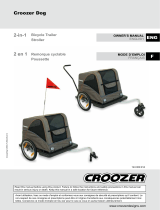 Croozer Dog 2014-2016 Le manuel du propriétaire
Croozer Dog 2014-2016 Le manuel du propriétaire
-
Croozer Kid for 1 Le manuel du propriétaire
-
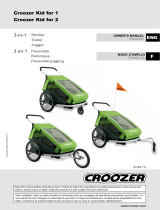 Croozer Kid 2014 Le manuel du propriétaire
Croozer Kid 2014 Le manuel du propriétaire
-
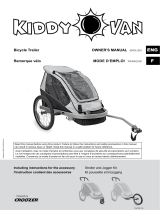 Croozer Kiddy Van Le manuel du propriétaire
Croozer Kiddy Van Le manuel du propriétaire
-
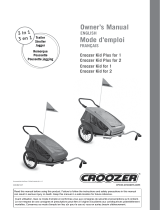 Croozer Kid / Kid Plus 2016-2017 Le manuel du propriétaire
Croozer Kid / Kid Plus 2016-2017 Le manuel du propriétaire
-
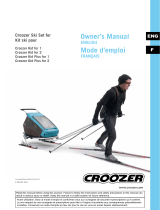 Croozer Ski Adapter Kit Le manuel du propriétaire
Croozer Ski Adapter Kit Le manuel du propriétaire
-
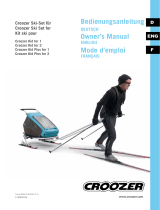 Croozer Ski-adapter-set Le manuel du propriétaire
Croozer Ski-adapter-set Le manuel du propriétaire
-
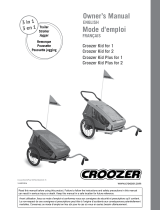 Croozer Kid Plus Le manuel du propriétaire
Croozer Kid Plus Le manuel du propriétaire
-
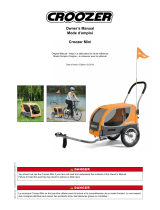 Croozer Croozer Mini Le manuel du propriétaire
Croozer Croozer Mini Le manuel du propriétaire
-
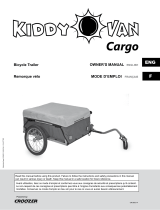 Croozer kiddy van cargo Le manuel du propriétaire
Croozer kiddy van cargo Le manuel du propriétaire

















































































